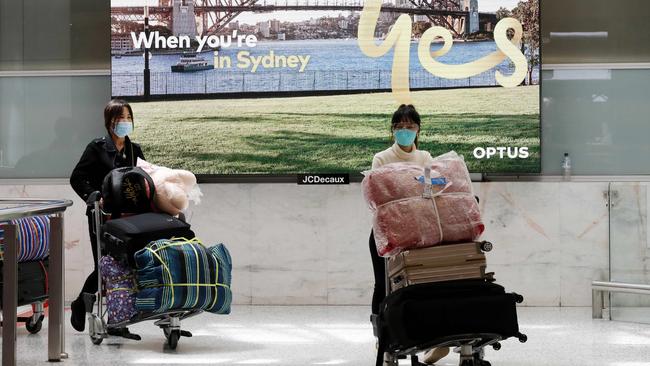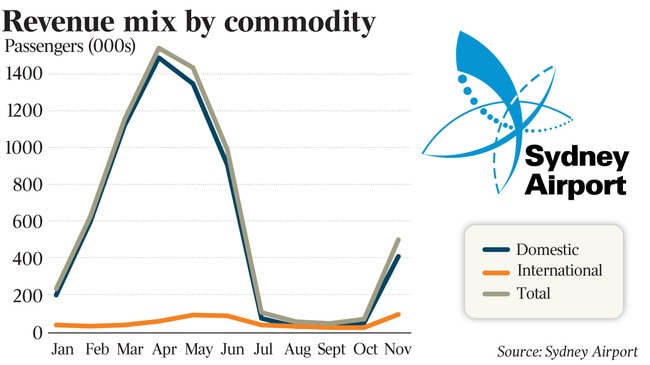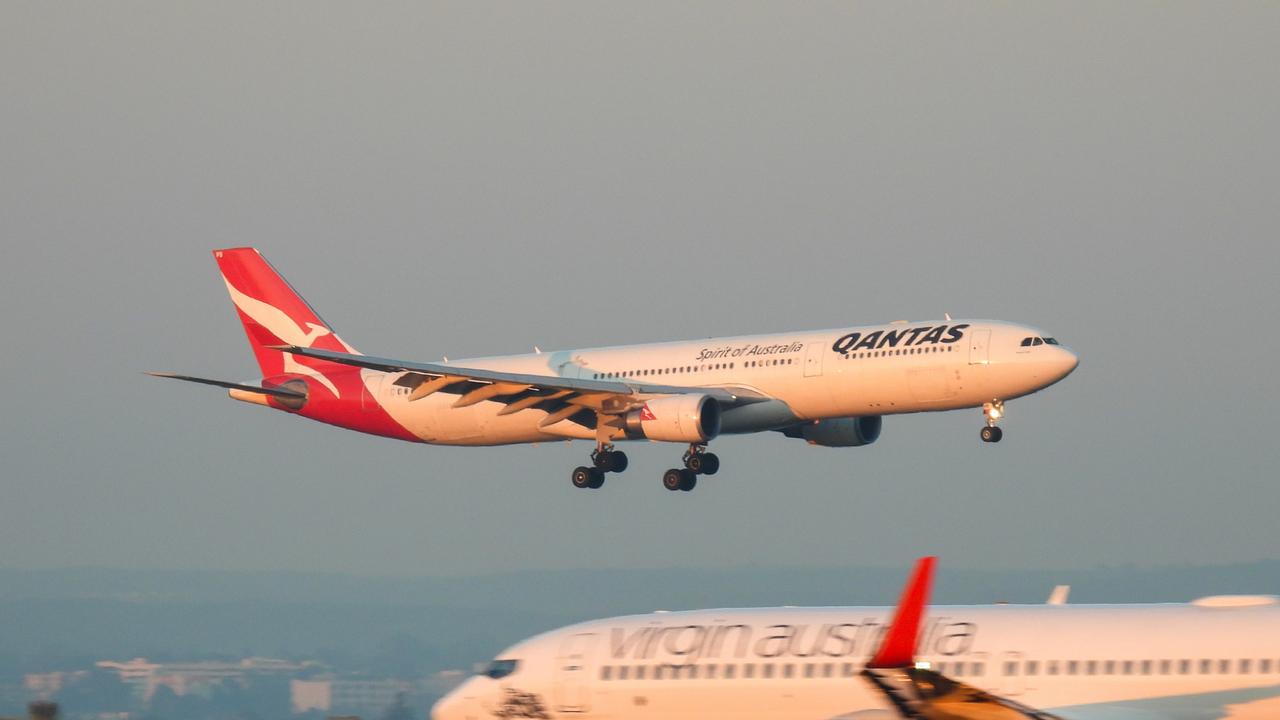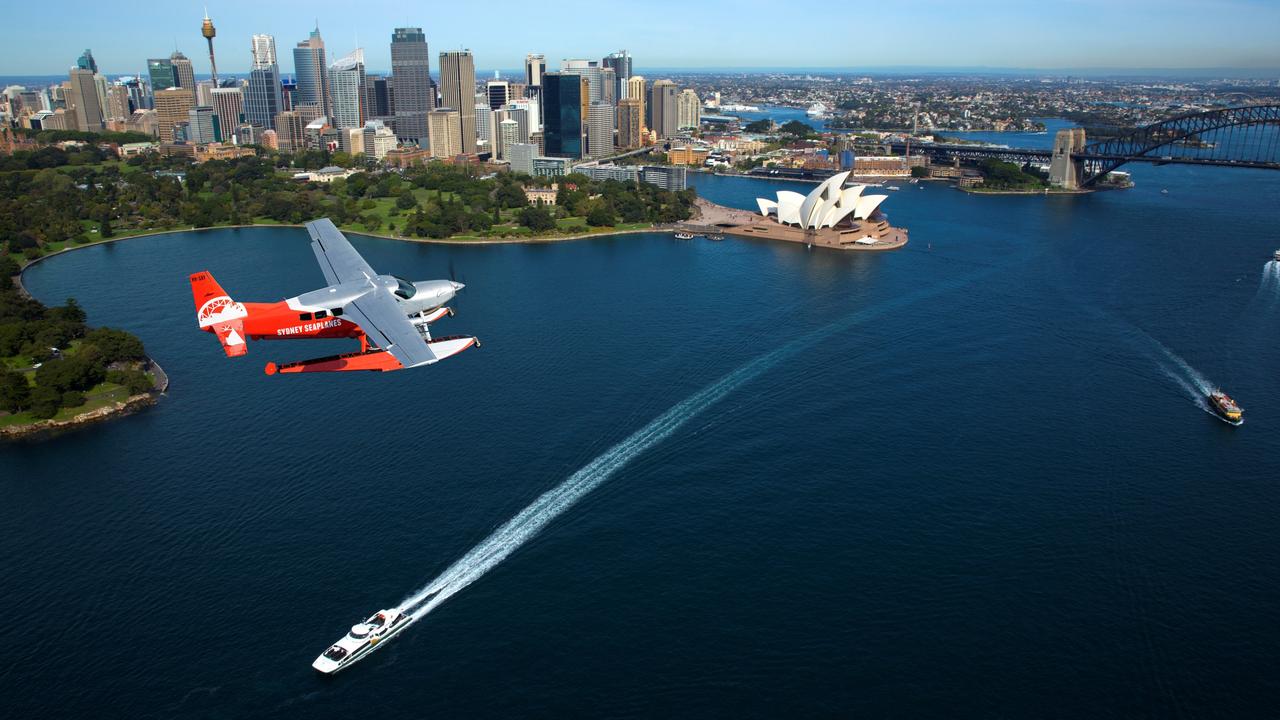Domestic airfares running cheap as travel industry braces for Omicron fallout
Discount airfares are reducing the cost of domestic travel to well below pre-Covid levels but will Omicron derail holiday plans?

The spread of the Omicron variant appears to have done little to stop a surge in travel bookings – although those heading overseas will be paying fares well above pre-pandemic levels.
According to travel platform Webjet, bookings increased in the week of December 6 for travel in the rest of the month, in January and as far ahead as June.
But Sydney Airport is warning that – despite a doubling of international travel in November compared to the same month last year – the Omicron outbreak was expected to slow the recovery.
“The outlook for passenger traffic remains subdued due to tightly controlled inbound international travel, entry requirements and restrictions into key overseas markets and the impact of the Omicron outbreak,” the airport said in its update.
According to the Webjet data, flights from Sydney to London cost on average $3368 for a return economy ticket booked in the last week, almost 40 per cent more than fares bought in the same week of 2019.
Melbourne to London return fares were 7.5 per cent above those bought two years ago, and flights to Los Angeles from Sydney and Melbourne also cost more than before Covid-19.
Sydney-Singapore fares were on average 24 per cent higher than pre-pandemic tickets, at $2422 return compared to $1950 in 2019.
In contrast, domestic travellers could fly from Sydney to the Gold Coast return for $292 this summer, 45 per cent cheaper than two years ago, or from Melbourne to the Sunshine Coast for $514, down from $748 before the pandemic.
Return economy fares for Brisbane-Hobart were 40 per cent cheaper now than in 2019, and Brisbane-Melbourne was costing an average $350 return, compared to $514 pre-pandemic.
Webjet chief executive David Galt said border openings and competitive fares were driving domestic bookings with strong demand for Queensland destinations including Brisbane, the Gold Coast and Cairns.
“Aussies keen to track down a great deal on travel can still score a bargain as airlines look set to continue to add capacity and even launch new routes, such as Rex’s Brisbane services from Sydney and Melbourne,” Mr Galt said.
“Competition heating up between the airlines means great things for travellers – price drops, schedule choice and more.”

Those who were paying to head overseas were most likely to be flying to London, Singapore, Bangkok and Los Angeles in December, according to Webjet bookings.
New Delhi and Mumbai also featured in the top 10 international destinations, due to the popularity of new direct flights by Qantas from Australia to India.
In contrast, pre-Covid travel favourites Auckland and Bali were nowhere to be seen in the top 10, replaced by Manchester in the UK in December, and Colombo in Sri Lanka in January.
Another change observed in the data was the length of overseas holidays being booked, with travellers using stockpiled leave to escape for an average 26 days, up from 19 days in 2019.
Forward bookings for 2022 were also building with travel being locked in as far ahead as June.
“It’s great to see customer confidence returning as international borders open and Australians begin not only searching but also booking those trips further into 2022,” Mr Galt said.
Concerns were growing throughout the travel industry that Omicron outbreaks could deliver another setback to the recovery in the event various restrictions were reimposed.
Australian Tourism Export Council managing director Peter Shelley said the past 18 months had proven to travellers and tourism businesses that things could change without warning.
“This has made everyone very nervous and eroded consumer confidence to travel,” Mr Shelley said.
“Right now, in light of the Omicron variant, we need a steady hand from governments who must show tolerance of what may be the beginning of a range of new Covid variants.
“The tourism industry cannot sustain a stop-start approach, particularly those which are organising international travellers to come here.”

Sydney Airport’s monthly passenger traffic report sounded a similar warning, after healthy gains in domestic and international passengers last month.
After months of dwindling figures, the airport recorded a doubling of international travellers in November compared to the same month last year, while domestic passengers increased by third.
Total passenger traffic was 498,000 in November, down 86.7 per cent from the same month in 2019. International traveller numbers were most affected, down more than 93 per cent.
But with 407,000 domestic travellers passing through Sydney Airport in November, traffic was significantly higher than October – when only 46,000 did.






